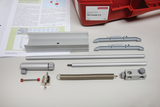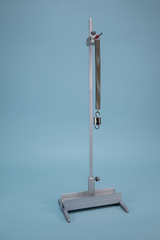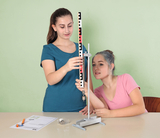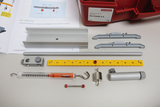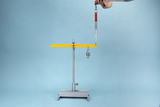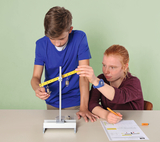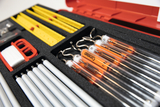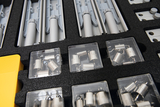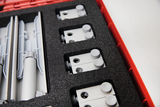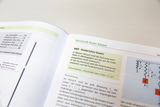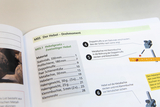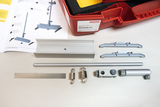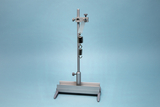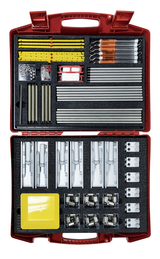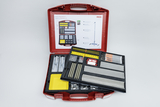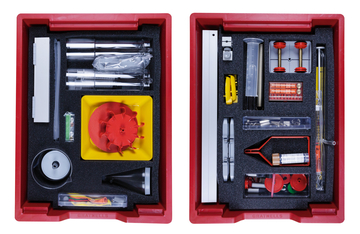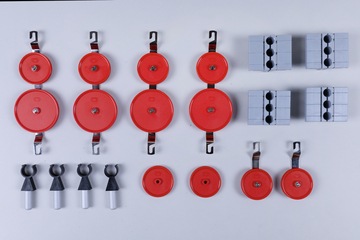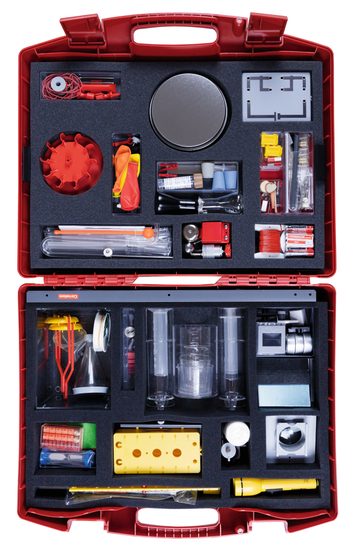Class set Mechanics 2.0
Possibility to tie in with mathematics:
- Use of age-appropriate statistics when evaluating
- Testing for proportional correlations
- Introduction of vector summation with overlapping forces.
A geometric analysis is included in the manual.
This kit covers the following basic laws of physics:
- Newton’s 2nd law
- Hooke’s law
- Archimedes law of the lever
- can be used for stationery work
- no special room necessary!
On the two-sided lever, the leverage law is clarified.
In the plastic deformation of sand, it is investigated whether the crater diameter generated when a steel ball falls into sand depends linearly on the fall height.
The use of a force gauge is learned when determining the weight force. The location factor is introduced or repeated. Finally, when comparing the measured values with theoretical values, the accuracy of the force gauge is discussed.
In this experiment, the elongation of a spring as a function of the force exerted on the spring is investigated.
The center of gravity, or more precisely a heavy axis, of an arbitrarily shaped disc is determined experimentally. Subsequently, the static equilibrium of the disk is examined.
On the one-sided lever, the leverage law is clarified.
In the elastic deformation of a leaf spring, it is investigated whether there is a linear relationship between the deflection of the leaf spring and the attacking force.
- 1 × Plastic box, clear, 60/40
- 2 × String on spool
- 6 × Plastic box 60x60x30 mm
- 12 × Bosshead with slit
- 6 × Rail, 180 mm
- 6 × Dynamometer, 1 N
- 6 × Leaf spring 150x16 mm
- 6 × Spring 150 mm / 10 N
- 1 × Tray 510x360x20 mm
- 1 × Foam insert 1 for 43020
- 1 × Foam insert 2 for 43020
- 1 × Storing diagram,int.vers.
- 1 × Lidfoam grey,515x355x10mm
- 6 × Lever with bores
- 1 × Plastic box, smooth 64x64x15 mm
- 6 × Dish, plastic, yellow 150x140x35mm
- 1 × Plastic case ca.540x450x150 mm
- 6 × Steel ball, 12 mm Ø
- 6 × Metal axis 50 mm
- 12 × Tubular clip, 5x4 mm
- 6 × Clamp pipe
- 6 ×
- 6 ×
- 12 ×
- 12 ×
- 18 ×
- 6 ×

